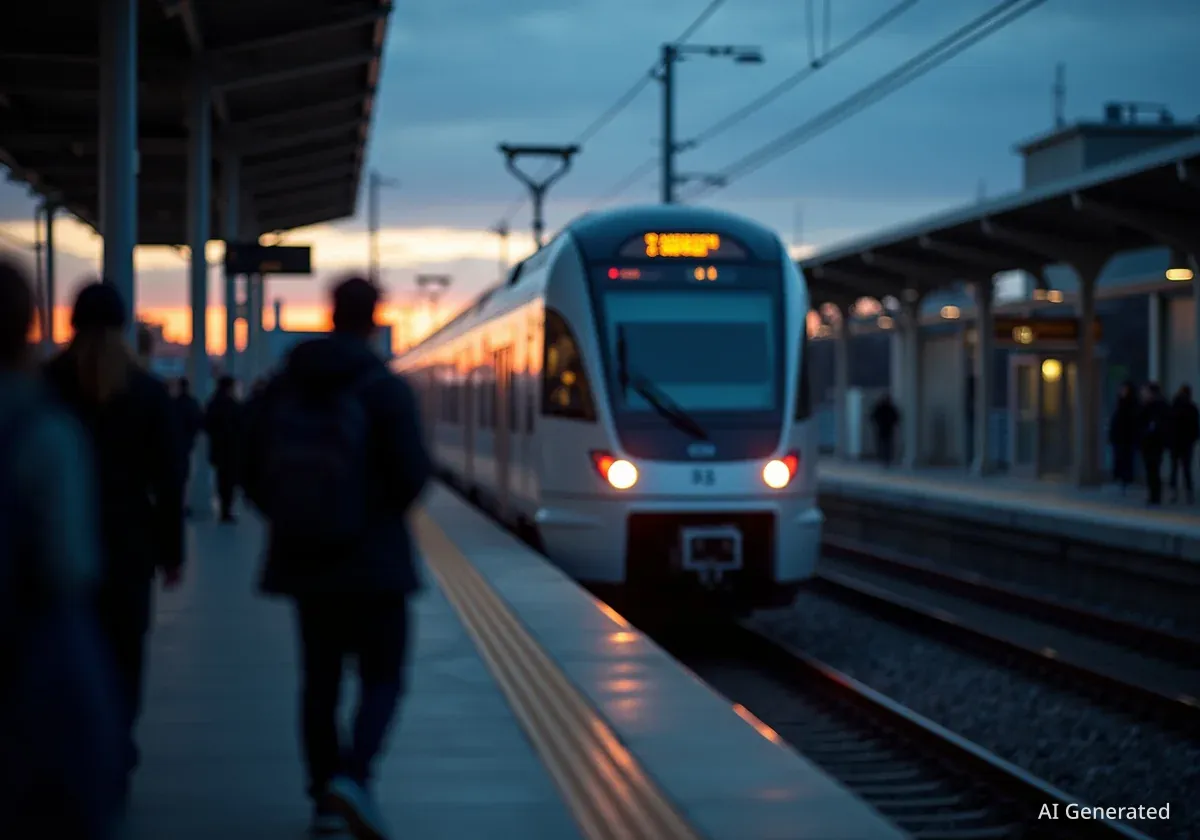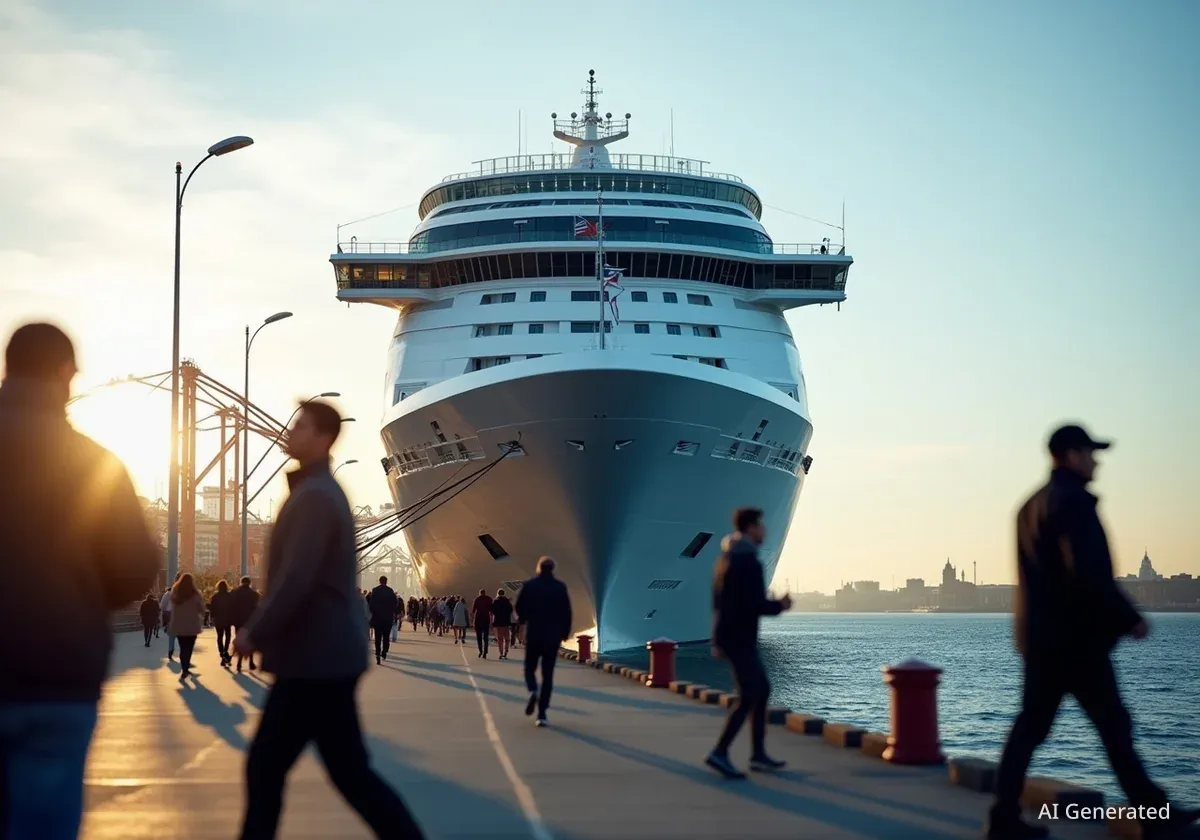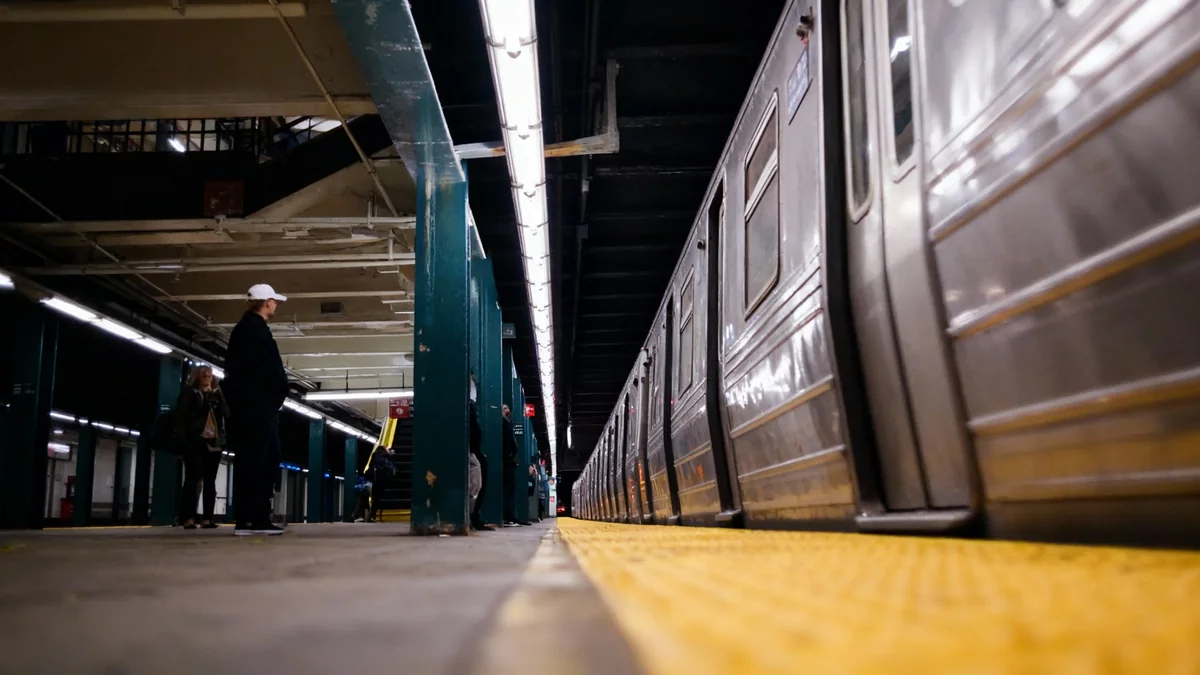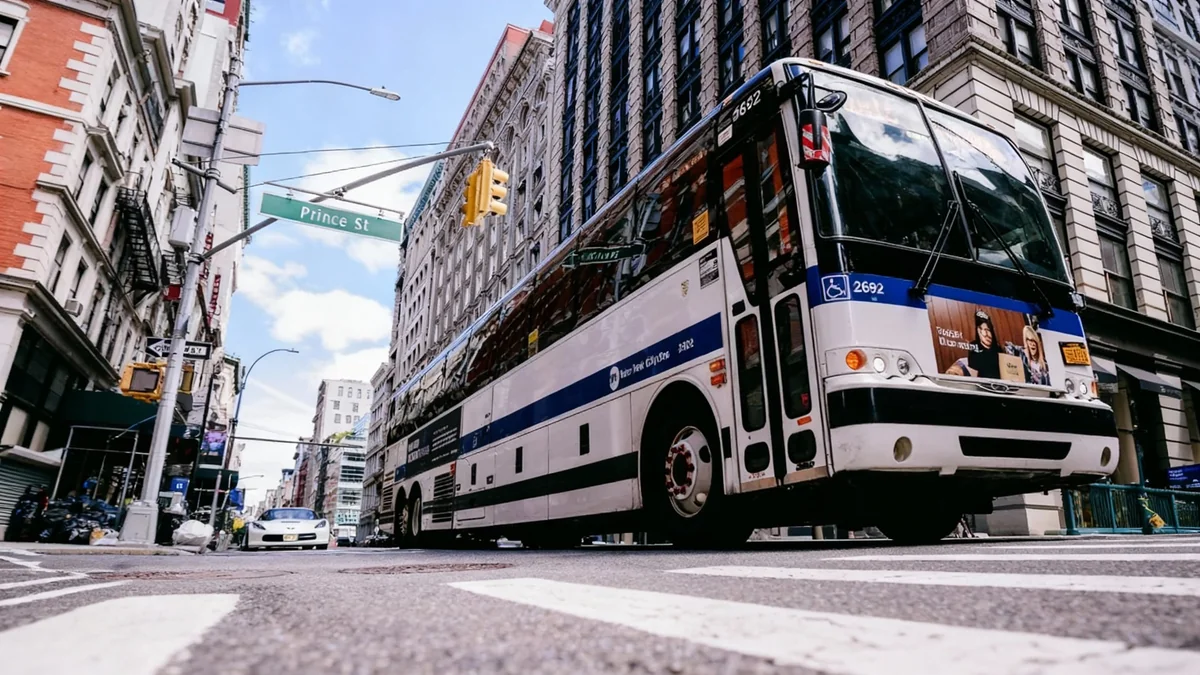Caltrain, the commuter rail line serving the San Francisco Bay Area, is facing significant service reductions starting in November 2026 if critical funding is not secured. This potential setback comes even as the agency celebrates increased ridership and high satisfaction rates following its multi-billion dollar electrification project.
Key Takeaways
- Caltrain may end service at 9 PM and suspend weekend operations from November 2026.
- About one-third of existing stations could close to save money.
- Ridership has increased by 55% since electric trains began running in April 2024.
- Passenger satisfaction rates are at a 27-year high, between 91% and 93%.
- The agency needs to secure funding by early 2026 to avoid these drastic cuts.
Electrification Boosts Ridership and Satisfaction
Caltrain's new electric multiple unit (EMU) trains, built by Stadler, began operating in April 2024. This marked a major shift from the older, diesel locomotive-hauled trains. The electrification project, a substantial investment, has already yielded positive results.
Since the launch of electric service, ridership has seen a significant increase. The number of passengers has risen by 55%. Weekend ridership has more than doubled, indicating a strong public response to the modernized service.
Rider Satisfaction Soars
Passenger satisfaction with Caltrain reached between 91% and 93% in recent surveys. These figures represent the highest satisfaction levels recorded in the 27 years since Caltrain began tracking passenger feedback.
The new electric trains offer several operational advantages. They accelerate faster, reducing travel times and wear on the tracks. They are also generally easier to operate compared to the older diesel models, which now only serve the southern section of the line.
Proposed Cuts Threaten Commuter Experience
Despite these successes, Caltrain has outlined a drastic plan for service reductions if funding gaps persist. These proposed changes, set to begin in November 2026, would severely impact commuters and leisure travelers.
Under the proposed plan, weekday service would end as early as 9 PM. This would make evening activities in cities like San Francisco impractical for those relying on Caltrain for their return journey. Evening shopping, visiting friends, or attending cultural events would become difficult without expensive rideshare alternatives.
Impact on Weekend Travel
The most significant proposed cut involves the complete suspension of Caltrain service on weekends. This means none of the more than two dozen stations would be operational, effectively eliminating a crucial transportation option for weekend leisure, tourism, and family visits.
Furthermore, the plan suggests closing approximately one-third of the existing stations. Many of these stations have recently undergone modernization as part of the electrification project. Closing them would reduce accessibility and potentially discourage ridership further.
Reduced Service for Special Events and Daily Commutes
Caltrain plays a vital role in connecting fans to sporting events, such as those at PayPal Park. The proposed cuts would likely impact this service. Currently, fans are accustomed to having four to five trains per direction within 90 minutes before a game. The new plan could reduce this to just two trains per direction, potentially deterring fans from using public transit.
Daily service frequency would also be affected. The plan calls for a maximum of one train per hour in each direction. This would likely mean the end of express services, formerly known as Baby Bullets, which skip multiple stations to save time.
"The closure of certain stations would also reduce the number of potential customers, which would further lower the number of riders per train."
Instead, most services would be all-stop local trains. While electric trains accelerate faster, the time savings from skipping a few stations on a local route are minimal, typically less than ten minutes for the full journey between San Jose and San Francisco.
The Broader Funding Challenge for Public Transit
Caltrain emphasizes that these are not final decisions. The agency is using this plan to highlight the urgency of securing necessary funding by early 2026. The situation underscores a common challenge for public transit projects in the United States, where significant investments are made in new infrastructure, but long-term operational costs often face budget uncertainties.
The potential cuts threaten to undermine the benefits of the electrification project. It could lead to a scenario where a state-of-the-art system, already demonstrating efficiency gains and high public approval, becomes underutilized due to a lack of sustained operational funding. This could result in a substantial waste of taxpayer money and a less appealing public transit option for the region.
Recent Transit Investments
Other regions in the US have recently seen major transit developments, including a new rail connection to Honolulu Airport in Hawaii and a new metro-tram system to LAX in Los Angeles. These projects highlight the ongoing push for improved public transportation.
The outcome for Caltrain will likely become clearer in the coming months as political discussions and public advocacy efforts intensify. The goal now appears to be minimizing the extent of any cuts rather than avoiding them entirely.





